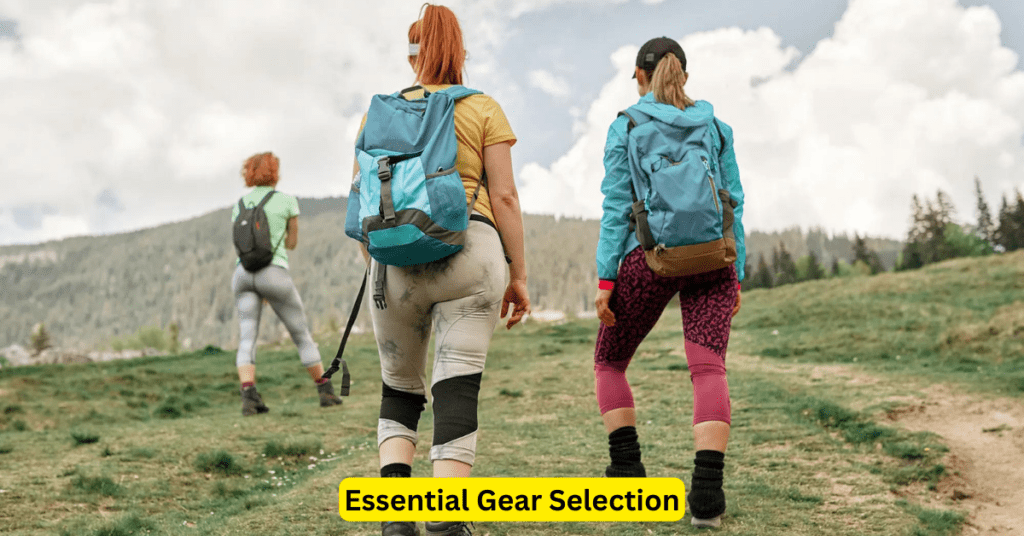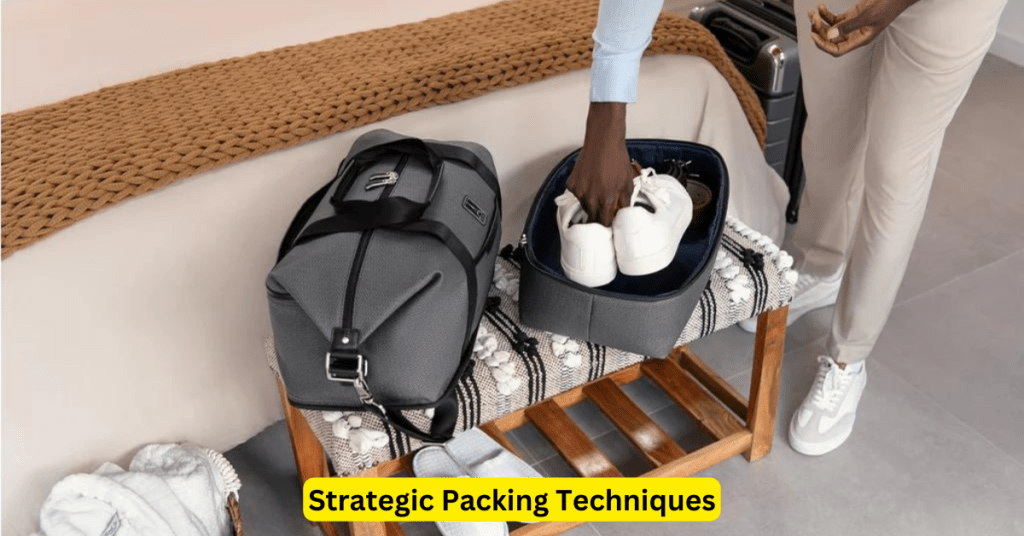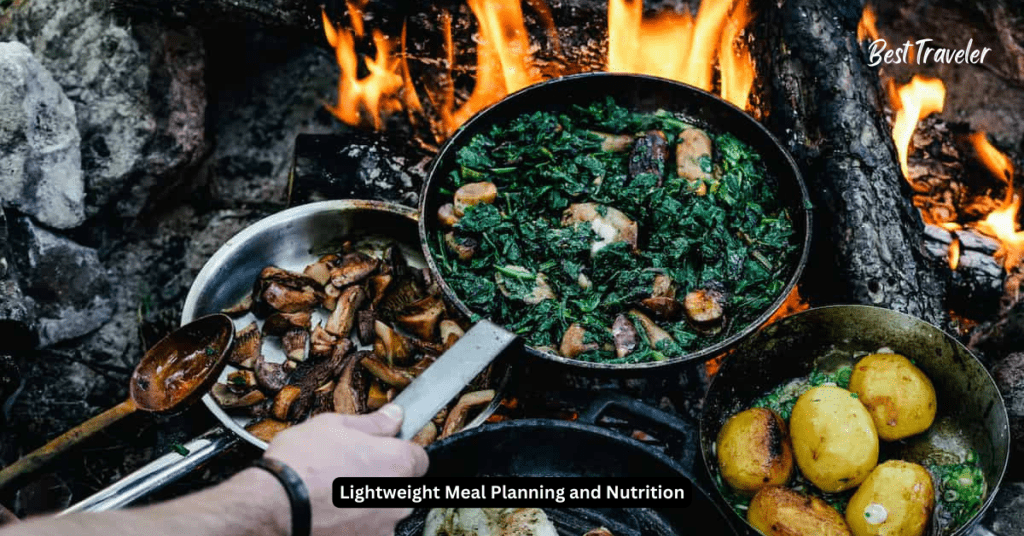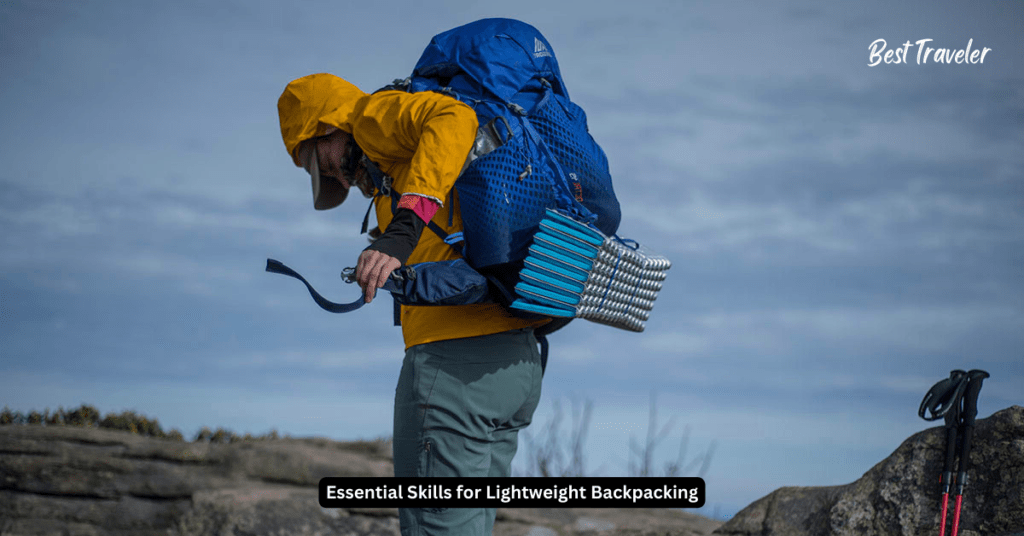Introduction
Backpacking is not just a travel style; it’s a way of life for many adventurers seeking the thrill of exploration and discovery. Whether you’re trekking through the wilderness, exploring exotic cities, or traversing rugged terrains, one of the most crucial skills to master is the art of packing light.
The allure of a backpacking trip lies in its simplicity and freedom from unnecessary burdens. By minimizing your load, you can enhance your mobility, reduce fatigue, and increase your overall enjoyment of the journey. However, packing light requires careful planning, strategic organization, and a minimalist mindset.
Understanding the Importance of Packing Light
Before we delve into the specifics of packing light, let’s take a moment to understand why it’s such a crucial aspect of backpacking.
- Enhanced Mobility: Carrying less weight means greater freedom of movement. Whether you’re navigating steep trails or maneuvering through crowded streets, a lighter pack allows you to move with ease and agility.
- Reduced Fatigue: Heavy loads can quickly drain your energy and dampen your spirits. By packing light, you can minimize fatigue and maintain a higher level of endurance throughout your journey.
- Increased Flexibility: Travel plans can change unexpectedly, requiring you to adapt on the fly. With a lightweight pack, you’ll have the flexibility to adjust to new circumstances without feeling weighed down by excess baggage.
Essential Gear Selection

Choosing the Right Gear for Your Backpacking Adventure
When it comes to packing light, selecting the appropriate gear is paramount. Each item you carry should serve a specific purpose and contribute to your comfort, safety, and enjoyment on the trail. Here’s a comprehensive guide to help you choose the essential gear for your backpacking trip:
Backpack
Your backpack is the cornerstone of your packing strategy, so it’s essential to choose one that fits well and offers sufficient capacity without being overly bulky. Look for a lightweight, durable backpack with adjustable straps and multiple compartments for organized storage. Consider the length of your trip and the amount of gear you’ll need to carry when selecting the appropriate size.
Shelter
Invest in a lightweight tent or hammock system that provides protection from the elements without adding unnecessary weight to your pack. Look for models made from high-quality materials and designed for easy setup and breakdown. Alternatively, consider using a lightweight tarp or bivy sack for minimalist shelter options.
Sleeping Gear
Opt for a compact sleeping bag that offers the right balance of warmth and weight for the conditions you’ll encounter. Choose a sleeping pad with a high warmth-to-weight ratio to provide insulation and cushioning without adding bulk to your pack. Consider inflatable or foam sleeping pads for lightweight options that offer comfort and support.
Clothing
Pack versatile clothing items that can be layered for warmth and protection in a variety of conditions. Choose lightweight, moisture-wicking fabrics that dry quickly and resist odors to minimize the need for frequent washing. Focus on essentials such as base layers, insulating layers, outer shells, and accessories like hats and gloves to cover all your bases.
Cooking Gear
Opt for lightweight cooking gear such as a compact stove, fuel canister, pot, and utensils to prepare meals on the trail. Consider minimalist cooking systems like alcohol stoves or ultralight canister stoves that offer efficient performance without adding bulk to your pack. Pack lightweight, dehydrated meals and snacks to minimize food weight while maximizing nutrition and energy.
Navigation and Safety
Carry essential navigation tools such as a map, compass, GPS device, or smartphone with offline maps to help you stay on course during your backpacking trip. Pack a lightweight first aid kit with essential supplies for treating minor injuries and ailments on the trail. Consider carrying a lightweight emergency shelter, signaling devices, and a multi-tool for additional safety and preparedness.
Hydration
Stay hydrated on the trail by carrying a lightweight water filtration system or purification tablets to treat water from natural sources. Pack a durable water bottle or hydration bladder to carry enough water for your journey, and consider supplementing with electrolyte tablets or powder for added hydration and energy.
Personal Items
Minimize your personal items to essentials such as toiletries, sunscreen, insect repellent, and personal hygiene products. Choose lightweight, travel-sized containers and multipurpose items to save space and weight in your pack. Consider leaving non-essential items at home or sharing communal items with your travel companions to further reduce your load.
By carefully selecting lightweight, high-quality gear that meets your specific needs, you can optimize your packing strategy and reduce the overall weight of your backpacking load. Remember to prioritize versatility, durability, and functionality when choosing your gear to ensure a comfortable and enjoyable backpacking experience.
Strategic Packing Techniques

Maximizing Space and Efficiency in Your Backpack
Now that you’ve selected the essential gear for your backpacking adventure, it’s time to focus on packing it efficiently to minimize bulk and maximize space. Strategic packing techniques can help you organize your gear effectively and distribute weight evenly throughout your pack. Here are some tips to streamline your packing process:
Roll Your Clothing
Instead of folding your clothing items, try rolling them to save space and reduce wrinkles. Rolling compresses your clothes into tight cylinders, allowing you to fit more items into your pack and preventing them from shifting during transit. This technique is especially useful for soft, lightweight fabrics like t-shirts, underwear, and socks.
Use Compression Stuff Sacks
Invest in compression stuff sacks to compact bulky items like sleeping bags, clothing layers, and insulated jackets. These sacks feature built-in straps or compression systems that allow you to compress the contents to a fraction of their original size. By compressing your gear, you can free up valuable space in your pack and create a more streamlined load.
Pack Smart and Light
Prioritize essential items and leave behind non-essential luxuries to reduce unnecessary weight in your pack. Consider the dual-purpose of each item you pack and opt for lightweight, multi-functional gear whenever possible. Minimize duplicates and only pack what you truly need to avoid carrying excess weight on the trail.
Organize by Weight and Accessibility
Distribute weight evenly throughout your pack by placing heavier items closer to your back and lighter items towards the top and bottom. This helps maintain balance and stability while hiking and prevents your pack from feeling lopsided or top-heavy. Keep frequently used items easily accessible by packing them in external pockets or compartments for quick retrieval on the trail.
Utilize Empty Spaces
Make use of empty spaces within your pack, such as gaps between larger items or pockets with unused capacity. Stuff small items like socks, gloves, and hats into empty spaces to maximize every inch of available space. Consider packing items inside your cookware or food containers to utilize empty cavities and prevent wasted space.
Lightweight Meal Planning and Nutrition

Fueling Your Adventure with Lightweight, Nutrient-Dense Meals
Maintaining proper nutrition is essential for sustained energy and endurance during your backpacking trip. However, traditional meal planning can result in heavy, bulky food items that weigh down your pack. By focusing on lightweight, nutrient-dense foods, you can fuel your adventure without sacrificing taste or nutrition. Here’s how to plan and prepare lightweight meals for your backpacking journey:
Embrace Dehydrated and Freeze-Dried Foods
Dehydrated and freeze-dried foods are lightweight, compact, and easy to prepare, making them ideal for backpacking meals. Look for dehydrated options such as pasta, rice, beans, and vegetables that can be rehydrated with boiling water to create hearty and satisfying meals on the trail. Freeze-dried meals, including soups, stews, and entrees, offer convenience and variety without adding significant weight to your pack.
Pack Lightweight Protein Sources
Ensure you’re getting an adequate amount of protein to support muscle recovery and endurance on the trail. Opt for lightweight protein sources such as jerky, canned tuna or chicken, nuts, seeds, and powdered protein supplements. Incorporate these protein-rich foods into your meals and snacks to maintain energy levels and promote muscle repair during long days of hiking.
Choose High-Energy Snacks
Pack lightweight, high-energy snacks to fuel your adventures between meals. Choose options like trail mix, energy bars, dried fruit, granola bars, and nut butter packets for quick and convenient sources of carbohydrates, protein, and healthy fats. These portable snacks provide a burst of energy when you need it most and help prevent midday fatigue during strenuous hikes.
Incorporate Fresh Ingredients Sparingly
While fresh fruits and vegetables add flavor and nutritional value to meals, they can be heavy and perishable when backpacking. Incorporate fresh ingredients sparingly, focusing on items that are lightweight, durable, and resistant to bruising. Apples, oranges, carrots, bell peppers, and cherry tomatoes are excellent options that provide hydration, vitamins, and antioxidants without adding excessive weight to your pack.
Plan for Proper Hydration
Stay hydrated on the trail by packing lightweight hydration options such as electrolyte tablets, powdered drink mixes, or flavor enhancers to encourage water consumption. Consider carrying a lightweight collapsible water bottle or hydration reservoir that can be easily refilled at natural water sources along the trail. Prioritize hydration before, during, and after physical activity to prevent dehydration and maintain optimal performance.
By incorporating lightweight, nutrient-dense foods into your backpacking meal plan, you can fuel your adventure without adding unnecessary weight to your pack. Experiment with different recipes, flavors, and meal preparation techniques to find what works best for your tastes and dietary preferences. With careful planning and creativity, you can enjoy delicious and satisfying meals on the trail while maximizing energy and minimizing pack weight.
Essential Skills for Lightweight Backpacking

Mastering Techniques to Enhance Efficiency and Safety
In addition to selecting the right gear and packing strategically, mastering essential skills is crucial for a successful lightweight backpacking trip. These skills not only improve efficiency but also enhance safety and enjoyment on the trail. Here are some key skills to develop before embarking on your adventure:
Navigation
Understanding how to navigate using maps, compasses, and GPS devices is essential for staying on course during your backpacking trip. Learn how to read topographic maps, identify landmarks, and use a compass to determine your location and direction of travel. Familiarize yourself with GPS navigation systems and smartphone apps that provide offline maps and GPS tracking capabilities for added convenience and accuracy.
Campsite Selection
Choosing the right campsite can significantly impact your comfort, safety, and overall camping experience. Look for flat, level ground that is free of hazards such as rocks, roots, and branches. Consider proximity to water sources, shelter from wind and inclement weather, and privacy from other campers when selecting your campsite. Follow Leave No Trace principles and minimize your impact on the environment by camping on durable surfaces and practicing proper waste disposal techniques.
Basic First Aid
Being prepared to handle minor injuries and medical emergencies is essential when venturing into the wilderness. Learn basic first aid skills such as wound care, splinting, CPR, and treating common ailments like blisters, insect bites, and dehydration. Pack a lightweight first aid kit with essential supplies and medications tailored to your specific needs and medical history. Consider taking a wilderness first aid course to gain hands-on experience and confidence in managing medical emergencies in remote settings.
Water Purification
Ensuring access to clean, safe drinking water is essential for hydration and overall health while backpacking. Learn how to properly purify water from natural sources such as rivers, lakes, and streams to remove harmful pathogens and contaminants. Familiarize yourself with different water purification methods, including filtration, chemical treatment, boiling, and ultraviolet (UV) light sterilization. Pack lightweight water purification equipment and carry extra supplies in case of emergencies.
Fire Building
Mastering the art of building and maintaining a fire is a valuable skill for cooking, warmth, and signaling in emergency situations. Learn how to safely gather and prepare firewood, build different types of fires (e.g., teepee, log cabin, lean-to), and use fire-starting tools such as matches, lighters, and fire starters. Follow local regulations and guidelines for fire safety and always extinguish fires completely before leaving your campsite.
Conclusion & Recap
Congratulations! You’ve now learned essential tips and techniques for packing light on your backpacking adventures. By prioritizing efficiency, versatility, and safety, you can enjoy the freedom and flexibility of traveling with a lighter load while still having all the gear you need for a memorable outdoor experience.
Recap of Key Points:
- Gear Selection: Choose lightweight, durable gear that meets your specific needs and fits well in your backpack.
- Strategic Packing: Utilize techniques such as rolling clothes, using compression sacks, and organizing by weight to maximize space and efficiency in your pack.
- Meal Planning and Nutrition: Opt for lightweight, nutrient-dense foods that provide energy and sustenance without adding unnecessary weight to your pack.
- Essential Skills: Master navigation, campsite selection, first aid, water purification, fire building, and Leave No Trace ethics to enhance safety and enjoyment on the trail.
Also Read:
Frequently Asked Questions
How can I reduce the weight of my backpacking gear without sacrificing comfort or safety?
Focus on selecting lightweight gear that serves multiple purposes, such as a versatile tent or a multi-functional cooking system. Additionally, prioritize packing only essential items and leave behind non-essential luxuries to minimize weight without compromising on comfort or safety.
What are some lightweight alternatives to traditional backpacking meals?
Consider options like dehydrated and freeze-dried foods, which are lightweight, compact, and easy to prepare. You can also pack lightweight protein sources such as jerky or nuts, along with high-energy snacks like trail mix or energy bars, to keep you fueled during your adventures.
How can I ensure proper hydration while backpacking without carrying heavy water bottles?
Invest in a lightweight water filtration system or purification tablets to treat water from natural sources such as rivers or streams. Additionally, consider carrying a collapsible water bottle or hydration reservoir that can be easily refilled along the trail to ensure you have access to clean, safe drinking water.
What are some essential skills I should learn before embarking on a lightweight backpacking trip?
Key skills to master include navigation using maps and compasses, campsite selection for safety and comfort, basic first aid for medical emergencies, water purification to ensure hydration, fire building for warmth and cooking, and practicing Leave No Trace ethics to minimize environmental impact.
How can I find the right balance between packing light and being prepared for unexpected situations on the trail?
Strike a balance by prioritizing essential gear and skills while remaining adaptable to changing conditions. Pack versatile items that can serve multiple purposes and focus on lightweight solutions for essential needs. Additionally, stay informed about weather forecasts, trail conditions, and potential hazards to be better prepared for any challenges you may encounter.

